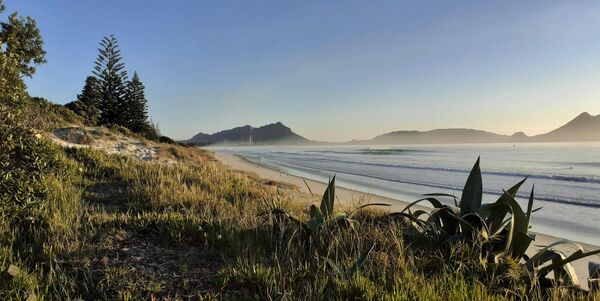Must-see places to visit in North Island, New Zealand.
North Island
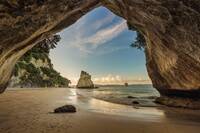
New Zealand’s North Island is as diverse a destination as you can find. Culturally rich with Maori heritage, it offers sandy beaches, sophisticated cities and stunning scenery at every turn. From the quaint arts and crafts of the subtropical Coromandel peninsular to the fascinating museums and galleries of downtown Wellington, there is much to discover.
This is your chance to enjoy new experiences every day. Marvel at Napier’s unique Art Deco architecture. Sip Hawke’s Bay Sauvignon Blanc produced yards from your motorhome. Dig a hole on the Coromandel’s Hot Water Beach and enjoy a steaming hot soak as the tide comes in.
Take a dolphin-spotting cruise around the majestically wild Bay of Islands. Knock on Bilbo Baggins’s door at the Hobbiton film set. Visit volcanoes, geothermal springs, and the bubbling geysers of Rotorua. Even take part in a Haka!
Bay Of Islands
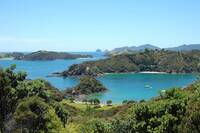
The Bay of Islands is a subtropical region known for its idyllic atmosphere, unspoilt islands and epic seascapes.
A three-hour drive north of Auckland, the Bay of Islands is comprised of 144 islands between Cape Brett and the Purerua Peninsula. Small towns like Opua, Paihia and Kerikeri are delightful, with boutique shops and restaurants and plenty of charm.
Russell is particularly charming – white-painted timber houses, picket fences, a lovely waterfront and jetty, as well as a well-preserved sense of Maori history. Enjoy a sundowner overlooking the bay in the characterful Duke of Marlborough.
Catch the ‘Dolphin Seeker’ cruiser and glide past gorgeous beaches and secret little coves and (hopefully) pass through the Hole in the Rock. Dolphin spotters are usually not disappointed.
Cape Reinga
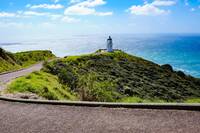
Cape Reinga offers the ultimate northern New Zealand experience where you can see two oceans collide and where you can discover the place of leaping, where Māori spirits begin their final journey. At the Cape, the Tasman Sea meets the Pacific Ocean in a spectacular swirl of currents.
At the northernmost tip of the Cape is a gnarled pohutukawa tree which is believed to be over 800 years old. According to Māori history, the spirits of deceased Māori leap from this tree into the ocean to return to their ancestral homeland of Hawaiki.
While Cape Reinga is not quite the most northern point of New Zealand (North Cape is further north but is a scientific reserve and not open to the public), Cape Reinga is definitely as far north as you can drive. Please bear in mind that as the area is a sacred site, eating is not permitted at Cape Reinga; however, if you're looking for a good picnic spot, take the turn off to beautiful Tapotupotu Bay, which is just 5km before the Cape.
Coromandel
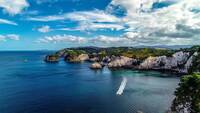
With its unrivalled coastline and ruggedly beautiful scenery, as well as its arts and colonial architecture, the Coromandel peninsula is a must-visit destination for many visitors and a favourite holiday spot for natives.
With twisting roads and stunning vistas around every corner, you’ll pass through forests, volcanic hills and idyllic beaches.
North of Hahei, Cathedral Cove is a natural marvel – a dramatic natural arch with a vaulted roof that beautifully frames views in either direction. You do have to walk there, so it is not for the faint-hearted, but it’s well worth a little effort.
South of Hahei lies Hot Water Beach, where you can scoop a shallow hole and enjoy the novelty of soaking in hot water bubbling through the golden sand at the edge of the low tide.
Gisborne
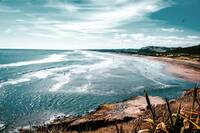
Gisborne is the first city in the world to greet the sun each morning and has a reputation for amazing food, wine, beer and surf beaches. As the unofficial ‘Chardonnay Capital of New Zealand’, Gisborne has a comprehensive wine trail leading to boutique wineries. If you’re interested in Māori culture, Gisborne is an essential port of call on your itinerary, as many old traditions are still evident in many parts of the city.
Dargaville
Dargaville is a Northland river town with an interesting history and is a great destination from which to explore the Kauri Coast. It is built along the edge of the wide Northern Wairoa River, and Māori settlements and marae (meeting places) have been scattered around the area for hundreds of years.
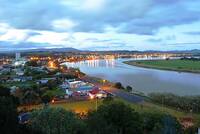
The township of Dargaville was established by Irish businessman Joseph McMullen Dargaville in the 1870s, during the heyday of kauri felling and gum digging. It was largely settled by Dalmatian immigrants, whose descendants still live there today. Dairy farming is the main local industry; the district also produces around two-thirds of New Zealand’s kumara (sweet potato) crop.
The Kauri Coast runs from the town of Brynderwyn up to the Hokianga Harbour and is accessed along the Twin Coast Discovery Highway. Famed for its giant kauri trees, stunning beaches and significant Māori and pioneer history, the Kauri Coast and Hokianga region is steeped in spectacular natural wonders and fascinating cultural heritage. Continuing north takes in the harbourside twin towns of Omapere and Opononi, nestled on the shores of the stunning Hokianga Harbour.
Paihia
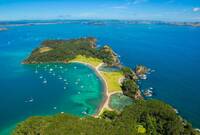
Paihia is a superb base from which to explore the stunning Bay of Islands. The town itself has a range of excellent bars, restaurants, and shops, and from the quayside, you can arrange trips to the outer islands, take a fishing expedition or catch a ferry to Russell.
Popular excursions include a cruise to see the ‘hole in the rock’ at the tip of Cape Brett, sea kayak tours, sailing, and scuba diving and for a bird’s-eye view, try parasailing, a scenic helicopter flight or for the more adventurous option, skydiving!
Close to Paihia, you’ll find the historic Treaty House at Waitangi Treaty Grounds, which marks the beginning of New Zealand as a nation, and to the west of Paihia is Haruru, where you’ll find an impressive waterfall and a boardwalk.
Kauri Coast
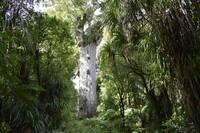
Discover the dramatic coastline along the Twin Coast Discovery Highway, travelling along the north-west coastline of the upper North Island. The harbourside towns of Omapere & Opononi lie on the shores of the fourth largest harbour in New Zealand, the Hokianga.
Take a short walk to view the mighty Kauri trees of the Waipoua Forest, amongst the world’s largest trees, growing to over 50m tall with some over 2000 years old. Steeped in natural beauty and with a fascinating cultural heritage, it’s well worth a visit to this magnificent coastline.
Napier and Hawke’s Bay
With an attractive blend of wonderful weather, excellent food and wine and stunning natural scenery, Hawke’s Bay has long been high on the bucket list of many visitors.
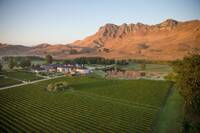
But there’s much more. Napier was devastated by an earthquake in 1931 and is today the Art Deco capital of the world with many 1930s architectural gems. In fact, the town has the highest concentration of Art Deco buildings in the world and celebrates with an Art Deco Weekend in February.
The Hawke’s Bay region is synonymous with the best of New World wines. Over 30 wineries open their doors for wine tasting and alfresco dining among the vines. A visit to Te Mata Peak is truly spectacular, with magnificent sweeping views – it’s a twisting road but well worth it.
Wairapapa
Wairarapa is a rural area with an off-the-beaten-track charm and offers travellers a wide range of experiences. Head up to the Waiohine Gorge at the foot of the Tararuas, and a swing bridge is your gateway to walking tracks into the ranges.
Head out to Cape Palliser on the coast, and you’ll pass through the tiny fishing village of Ngawi, where you’ll see a colourful array of old bulldozers and tractors parked on the beach. Each town in the region has their own individual character and charm.
Martinborough is the centre of the local wine industry, while Greytown has an architectural charm and is a favourite weekend getaway for Wellingtonians.
Whanganui
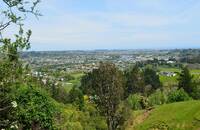
Whanganui, meaning 'big bay' or ‘big harbour', comes from the great river that flows through it and was one of the first cities to be founded in New Zealand. Previously known as Wanganui, it still features picture-perfect heritage buildings, world-class museums and established gardens that were developed over a century ago. The architectural beauty is perfectly paired with the town’s natural landscape; you can look in any direction and see a wide river, black sand beaches or rolling green hills with views of Mt Taranaki and Mt Ruapehu in the distance.
Home to hundreds of working artists, Whanganui is always buzzing with creative energy. From the prestigious New Zealand Opera School to the hot kiln studio at New Zealand’s only community glass centre, there is no shortage of artistic talent. The town is also home to numerous galleries, theatres and music venues, as well as two impressive art museums: The Sarjeant Gallery Te Whare O Rehua and Quartz Museum of Studio Ceramics.
Northland
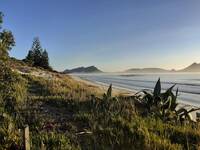
Occupying most of the Northland peninsula, this region encompasses the Bay of Islands but is well worth a mention of its own.
On the west coast, Ninety Mile Beach is spectacular, with amazing sand dunes at Te Paki Stream, leading eventually up to Cape Reinga, almost the most northerly tip of New Zealand. At the lighthouse, you’ll be rewarded with impressive views of the Pacific Ocean meeting the Tasman Sea.
The region is famed for its beautiful pohutukawa trees, revered by the Maori and today an important connection with home, for all New Zealanders. Flowering in December with a burst of brilliant red blooms, it is also known as the New Zealand Christmas Tree.
Another famous tree lying to the west in the Waipoua Forest is Tane Mahuta. This is the largest Kauri tree in the world, known as the Lord of the Forest and today both protected and rare.
